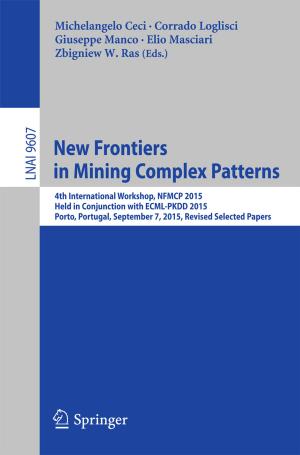Kuhn’s Structure of Scientific Revolutions - 50 Years On
Nonfiction, Science & Nature, Science, Other Sciences, Philosophy & Social Aspects, History| Author: | ISBN: | 9783319133836 | |
| Publisher: | Springer International Publishing | Publication: | May 18, 2015 |
| Imprint: | Springer | Language: | English |
| Author: | |
| ISBN: | 9783319133836 |
| Publisher: | Springer International Publishing |
| Publication: | May 18, 2015 |
| Imprint: | Springer |
| Language: | English |
In 1962, the publication of Thomas Kuhn’s Structure ‘revolutionized’ the way one conducts philosophical and historical studies of science. Through the introduction of both memorable and controversial notions, such as paradigms, scientific revolutions, and incommensurability, Kuhn argued against the traditionally accepted notion of scientific change as a progression towards the truth about nature, and instead substituted the idea that science is a puzzle solving activity, operating under paradigms, which become discarded after it fails to respond accordingly to anomalous challenges and a rival paradigm. Kuhn’s Structure has sold over 1.4 million copies and the Times Literary Supplement named it one of the “Hundred Most Influential Books since the Second World War.” Now, fifty years after this groundbreaking work was published, this volume offers a timely reappraisal of the legacy of Kuhn’s book and an investigation into what Structure offers philosophical, historical, and sociological studies of science in the future.
In 1962, the publication of Thomas Kuhn’s Structure ‘revolutionized’ the way one conducts philosophical and historical studies of science. Through the introduction of both memorable and controversial notions, such as paradigms, scientific revolutions, and incommensurability, Kuhn argued against the traditionally accepted notion of scientific change as a progression towards the truth about nature, and instead substituted the idea that science is a puzzle solving activity, operating under paradigms, which become discarded after it fails to respond accordingly to anomalous challenges and a rival paradigm. Kuhn’s Structure has sold over 1.4 million copies and the Times Literary Supplement named it one of the “Hundred Most Influential Books since the Second World War.” Now, fifty years after this groundbreaking work was published, this volume offers a timely reappraisal of the legacy of Kuhn’s book and an investigation into what Structure offers philosophical, historical, and sociological studies of science in the future.















